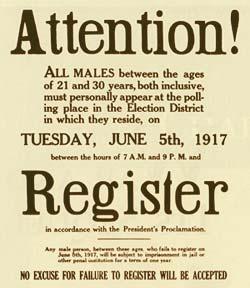The “Red Summer” of 1919 marked the culmination of steadily growing tensions surrounding the great migration of African Americans from the rural South to the cities of the North that took place during World War I. When the war ended in late 1918, thousands of servicemen returned home from fighting in Europe to find that their jobs in factories, warehouses and mills had been filled by newly arrived Southern blacks or immigrants. Amid financial insecurity, racial and ethnic prejudices ran rampant. Meanwhile, African-American veterans who had risked their lives fighting for the causes of freedom and democracy found themselves denied basic rights such as adequate housing and equality under the law, leading them to become increasingly militant.
Did You Know?
In the summer of 1919, Richard J. Daley, who served as Chicago's powerful mayor from 1955 until his death in 1976, was a 17-year-old member of an Irish-American organization called the Hamburg Athletic Club. Though an investigation later identified the club among the instigators of the rioting, Daley and his supporters never admitted that he participated in the violence.
In this fraught atmosphere, the white supremacist Ku Klux Klan organization revived its violent activities in the South, including 64 lynchings in 1918 and 83 in 1919. In the summer of 1919, race riots would break out in Washington, D.C.; Knoxville, Tennessee; Longview, Texas; Phillips County, Arkansas; Omaha, Nebraska and–most dramatically–Chicago. The city’s African-American population had increased from 44,000 in 1909 to more than 100,000 as of 1919. Competition for jobs in the city’s stockyards was particularly intense, pitting African Americans against whites (both native-born and immigrants). Tensions ran highest on the city’s South Side, where the great majority of black residents lived, many of them in old, dilapidated housing and without adequate services.
A DROWNING IN LAKE MICHIGAN
On July 27, 1919, a 17-year-old African-American boy named Eugene Williams was swimming with friends in Lake Michigan when he crossed the unofficial barrier (located at 29th Street) between the city’s “white” and “black” beaches. A group of white men threw stones at Williams, hitting him, and he drowned. When police officers arrived on the scene, they refused to arrest the white man whom black eyewitnesses pointed to as the responsible party. Angry crowds began to gather on the beach, and reports of the incident–many distorted or exaggerated–spread quickly.
Violence soon broke out between gangs and mobs of black and white, concentrated in the South Side neighborhood surrounding the stockyards. After police were unable to quell the riots, the state militia was called in on the fourth day, but the fighting continued until August 3. Shootings, beatings and arson attacks eventually left 15 whites and 23 blacks dead, and more than 500 more people (around 60 percent black) injured. An additional 1,000 black families were left homeless after rioters torched their residences.
Watch this video on the Chicago Race Riots of 1919.
LASTING IMPACT
In the aftermath of the rioting, some suggested implementing zoning laws to formally segregate housing in Chicago, or restrictions preventing blacks from working alongside whites in the stockyards and other industries. Such measures were rejected by African-American and liberal white voters, however. City officials instead organized the Chicago Commission on Race Relations to look into the root causes of the riots and find ways to combat them. The commission, which included six white men and six black, suggested several key issues —including competition for jobs, inadequate housing options for blacks, inconsistent law enforcement and pervasive racial discrimination—but improvement in these areas would be slow in the years to come.
President Woodrow Wilson publicly blamed whites for being the instigators of race-related riots in both Chicago and Washington, D.C., and introduced efforts to foster racial harmony, including voluntary organizations and congressional legislation. In addition to drawing attention to the growing tensions in America’s urban centers, the riots in Chicago and other cities in the summer of 1919 marked the beginning of a growing willingness among African Americans to fight for their rights in the face of oppression and injustice.
Comment on the blog:
What started the Riot? How do you feel about the behavior of white people when they saw the boy in the raft? What was the response of the police? Tell us what you felt as you heard this story.






